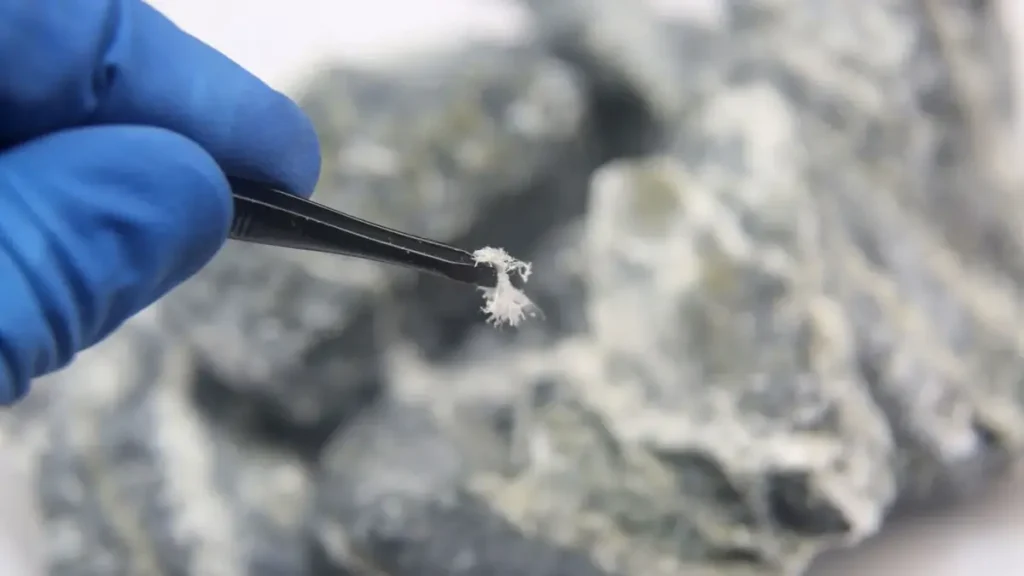Ever stumbled upon the term asbestlint and wondered what on earth it means? You’re not alone! This lesser-known term might not ring bells like “asbestos” does, but it’s just as crucial to understand—especially if you’re living in or working with older buildings.
Let’s dive into this dusty (pun intended) topic and unpack the truth behind asbestlint.
Understanding Asbestlint
What Exactly Is Asbestlint?
Asbestlint is a term that refers to microscopic fibers or fine dust particles released from asbestos-containing materials (ACMs) as they age, deteriorate, or are disturbed. Unlike visible asbestos chunks, this fine dust floats in the air and can be inhaled without anyone noticing. Think of it as the “lint” of asbestos—tiny, sneaky, and dangerous.
Origins: Where Does It Come From?
Asbestlint forms when materials like asbestos insulation, ceiling tiles, cement, or flooring degrade over time. Activities like renovation, demolition, or heavy machinery use can release these fibers into the air, posing an unseen risk to health.
Why Asbestlint Is a Big Deal
Health Hazards Associated with Asbestlint
Let’s get real. Breathing in asbestlint is seriously bad news. These fibers lodge themselves in your lungs and don’t come out. Over time, this exposure can lead to:
- Asbestosis (scarring of the lungs)
- Mesothelioma (a rare, aggressive cancer)
- Lung cancer
- Pleural disorders
And the worst part? Symptoms often don’t show up for 20 to 30 years.
Environmental Concerns
Once released, asbestlint doesn’t just vanish. It lingers in dust, carpets, walls, and ventilation systems, turning your indoor environment into a long-term hazard zone.
Workplace Risks
Workers in construction, shipbuilding, demolition, and firefighting face higher risks. Without proper safety protocols, asbestlint exposure becomes a daily danger.
Identifying Asbestlint in Your Environment
Common Places It’s Found
If you live or work in a building built before the 1980s, you might be unknowingly coexisting with it. Asbestlint can originate from:
- Ceiling and floor tiles
- Pipe insulation
- Roofing materials
- HVAC ducts
- Textured paints
Signs You Might Be Dealing With Asbestlint
- Cracked or crumbling insulation
- Discolored ceiling tiles
- Dusty white particles near vents
- Persistent cough or breathing issues in the space
If any of this sounds familiar, it’s time to investigate.
Safe Handling of Asbestlint
DIY or Professional Help?
Here’s the short answer: Don’t DIY asbestlint removal. Ever.
Unless you’re trained and certified, the risk isn’t worth it. Professionals have the gear, training, and know-how to remove it safely.
Protective Measures at Home
Can’t call in the pros immediately? Take these steps:
Proper Ventilation
Keep windows open and fans running to disperse airborne particles (but avoid strong airflow that might stir fibers up).
Use of PPE (Personal Protective Equipment)
If you must interact with potential ACMs:
- Wear a high-efficiency particulate air (HEPA) filter mask
- Use disposable gloves and coveralls
- Never vacuum or sweep asbestos dust—use damp cloths and dispose of them safely
Laws and Regulations on Asbestlint
Global Legislation
Countries like Australia, the UK, and Japan have total asbestos bans. Others regulate its use tightly.
U.S. and EU Safety Standards
In the U.S., OSHA, EPA, and NIOSH all play roles in managing asbestos safety. In Europe, similar standards apply under REACH regulations.
These bodies govern who can remove asbestos, how waste is handled, and penalties for violations.
How to Remove Asbestlint Safely
Steps for Professional Removal
- Inspection and testing – Confirm asbestos presence
- Air sealing and isolation – Prevent fiber spread
- Wet removal techniques – Minimize airborne dust
- HEPA vacuuming and decontamination
- Proper disposal – According to hazardous waste laws
How Much Does Removal Cost?
Depends on the size and location. On average:
- Residential job: $1,000–$3,000
- Commercial building: $10,000–$30,000+
Yeah, it’s not cheap—but your lungs are worth it.
Asbestlint in Older Buildings
Risk Assessment in Historical Structures
Old schools, hospitals, and government buildings are notorious for harboring hidden asbestos. Always test before renovating.
Renovation Tips
- Hire licensed asbestos inspectors
- Get permits for asbestos removal
- Avoid disturbing walls or ceilings until inspection is done
Alternatives to Asbestos-Containing Products
Safer Insulation Materials
Modern insulation is now made of:
- Fiberglass
- Cellulose
- Mineral wool
- Aerogel
All much safer (and not cancer-causing).
Eco-Friendly Building Options
Sustainable, asbestos-free choices include:
- Hempcrete
- Cork panels
- Recycled denim insulation
Green and clean!
Future Outlook: Can We Eradicate Asbestlint?
Innovations in Asbestos Detection
Technologies like fiber optic sensors and AI-powered detection software are helping spot asbestos before it becomes a threat.
Growing Awareness and Advocacy
Thanks to education, legislation, and public pressure, we’re moving toward a world where asbestlint is history—not a hazard.
Conclusion
So, what’s the bottom line? Asbestlint is the invisible enemy lurking in old homes and buildings, waiting to be stirred up and inhaled. But with knowledge, caution, and the right experts on your side, you can protect your health and your home.
Don’t wait for a coughing fit or lung scan to sound the alarm—be proactive. Know the risks, spot the signs, and always play it safe. After all, when it comes to asbestlint, what you can’t see can hurt you.
FAQs About Asbestlint
1. Is asbestlint different from regular asbestos?
Yes. Asbestlint specifically refers to the fine, airborne particles or dust released from asbestos-containing materials—not just the raw asbestos fibers.
2. Can I test for asbestlint myself?
It’s not recommended. Home test kits exist, but they may be inaccurate. Hire a certified asbestos inspector for reliable results.
3. Is it safe to live in a house with asbestlint?
Only if the asbestos materials are sealed and undisturbed. Once damaged or aged, it becomes a serious health risk.
4. How long does asbestlint stay in the air?
Asbestos fibers can linger for hours or days, especially in poorly ventilated areas.
5. Can an air purifier remove asbestlint?
Only HEPA-certified purifiers can trap asbestos fibers. Standard air filters won’t cut it.
